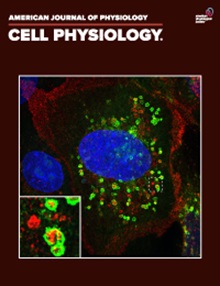Retraction for Wang and Gao.
IF 4.7
2区 生物学
Q2 CELL BIOLOGY
American journal of physiology. Cell physiology
Pub Date : 2025-08-01
Epub Date: 2025-02-26
DOI:10.1152/ajpcell.00481.2024
引用次数: 0
奥拉帕尼和帕博西尼在耐药上皮性卵巢癌中的协同作用。
本研究探讨了上皮性卵巢癌(EOC)中聚adp核糖聚合酶抑制剂(PARPi)耐药的机制。它还探索了通过将PARPi与细胞周期蛋白依赖性激酶4/6抑制剂(CDK4/6i)结合来克服这种耐药性的策略。用PARPi处理EOC细胞株A2780和SKOV-3,培养出稳定的耐药细胞株A2780-ola-r和SKOV-3-ola-r。奥拉帕尼、帕博西尼的低剂量治疗及其联合治疗显著降低了这些耐药细胞的肿瘤增殖。生物信息学分析确定了潜在的治疗靶点KNSTRN和TRPC4AP。低浓度联合用药诱导G1期细胞周期阻滞。免疫荧光研究显示,与DMSO相比,联合用药或帕博西尼治疗后,核RAD51降低,p-γH2AX水平升高。Western blot分析显示,抗性细胞系中同源重组修复(HRR)通路相关蛋白的表达升高。治疗后分析显示,KNSTRN水平与CDK4/6i或联合治疗的疗效呈负相关,而TRPC4AP水平与治疗反应呈正相关。这些发现为EOC中PARPi耐药的机制提供了重要的见解,并表明PARPi与CDK4/6i联合治疗是一种有希望的治疗策略,可以克服这种耐药并改善EOC患者的预后。
本文章由计算机程序翻译,如有差异,请以英文原文为准。
求助全文
约1分钟内获得全文
求助全文
来源期刊
CiteScore
9.10
自引率
1.80%
发文量
252
审稿时长
1 months
期刊介绍:
The American Journal of Physiology-Cell Physiology is dedicated to innovative approaches to the study of cell and molecular physiology. Contributions that use cellular and molecular approaches to shed light on mechanisms of physiological control at higher levels of organization also appear regularly. Manuscripts dealing with the structure and function of cell membranes, contractile systems, cellular organelles, and membrane channels, transporters, and pumps are encouraged. Studies dealing with integrated regulation of cellular function, including mechanisms of signal transduction, development, gene expression, cell-to-cell interactions, and the cell physiology of pathophysiological states, are also eagerly sought. Interdisciplinary studies that apply the approaches of biochemistry, biophysics, molecular biology, morphology, and immunology to the determination of new principles in cell physiology are especially welcome.

 求助内容:
求助内容: 应助结果提醒方式:
应助结果提醒方式:


